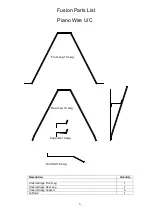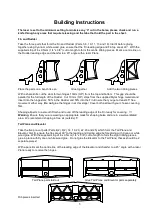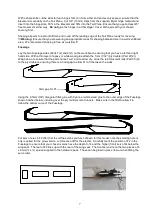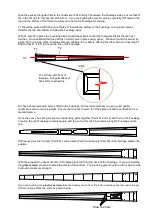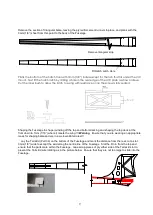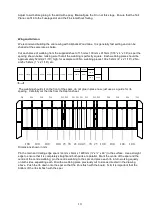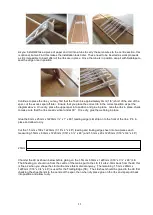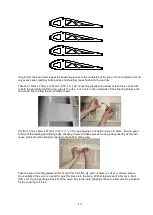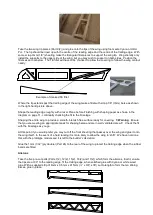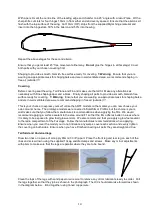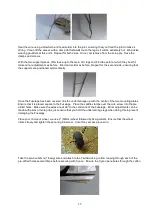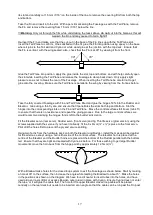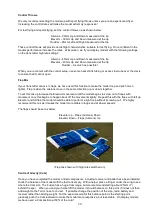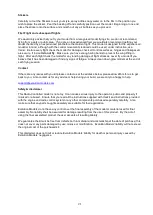
19
sit up against F1 and below the wing seat. The position of the Throttle cable must allow for this. The Bowden
cable will fit along side that tank. Use scrap balsa or ply to fix it to the side of the Fuselage.
Put one of the supplied clevises on the end of the Bowden cable. Pass it through the outer tube from the
engine into the radio bay and clip it onto the engine Throttle horn.
Clip the second clevis onto the servo horn and set the servo and carburettor to idle position. Mark the
position of the clevis on the Bowden cable, allowing enough cable to go into the end of the clevis. Cut the
cable and attach the clevis. Make sure that the servo opens to full Throttle and the trim can fully close the
Throttle barrel. Adjust the horn position/horn hole used etc. to ensure the Throttle range is correct. Also,
make sure that the servo is not made to work excessively. Ensure the route to your Throttle arm is a straight
as possible.
Fuel Tank
Install the fittings as directed by the instructions supplied with the tank. The breather pipes should face up to
the wider dimension of the tank. Cut the supplied fuel pipe to provide a feed pipe to the carburettor for filling
the tank and pressure pipe from the silencer. We would also recommend fitting a fuel filter in-line.
ELECTRIC VERSION
Motor Mount
Mount the motor using the recommended motor mount ensuring that it is securely attached to the firewall, do
not use screws, only use lock nuts, bolts and washers suitable for this application.
Electronic Speed Controller (ESC)
On the prototypes, we mounted the ESC under the Fuselage between the undercarriage mounts, this
provided constant cooling which is essential to prevent the ESC from cutting out. Carefully drill holes through
the bottom of the Fuselage for the wires to pass into the radio bay. Stick the ESC to the bottom of the
Fuselage using double sided tape or hook and loop strips.
NEVER
program or alter the ESC settings with
the propellor attached!!
Motor Battery
We would recommend using a Lithium Polymer (Li-Po) battery for this model, use extreme caution when
using Li-Po batteries and
always
read the manufacturers or suppliers instructions when handling and
charging this type of battery. The battery sits at the front of the Fuselage and can be moved forward or back
to alter the centre of gravity (Explained later). Once the centre of gravity is achieved ensure that the battery
is unable to move during flight or foul the servos.
Receiver and Battery Position
The battery and receiver are to be located between the servo tray and tank or flight battery. For the Electric
version mount, as close to the servos as possible to allow maximum space in the battery compartment.
Ensure that both components are isolated from airframe vibration and that they are not able to move when
the model is in flight.

